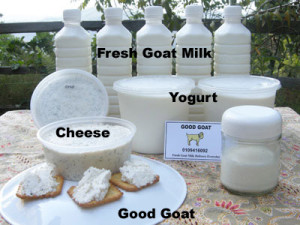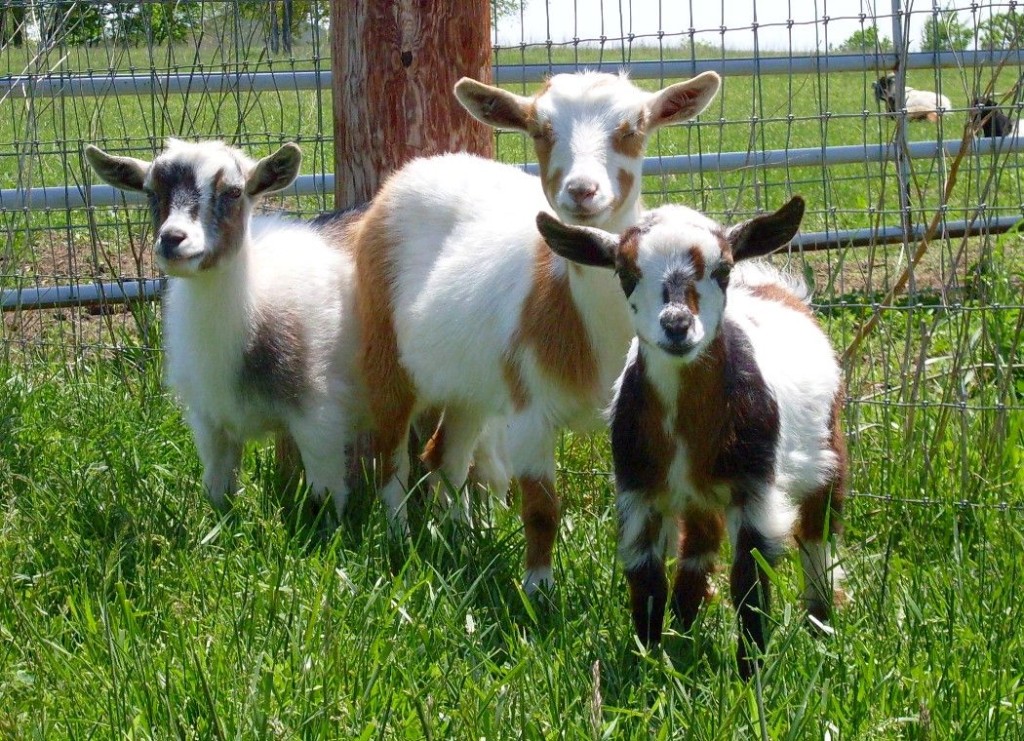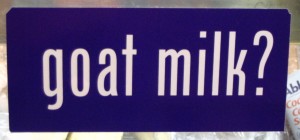As the possibility of our own property becomes more and more real Trace and I have been talking about what livestock we want. We already have Kate, our border collie, as well as the rabbits. We have talked about getting chickens shortly after we move. The other animals we’ve talked about are an additional dog, bees and goats.

I’ve been doing more research on goats. We look forward to having goats ‘browse’ on our property and help keep down weeds and other unwanted plants, however, our primary goal with goats is to use them for milk and other dairy products – we hope to learn to make our own yogurt and cheese. We would also like goats that are friendly, if we’re going to be milking them we want them to not dislike us! Plus, I think it makes sense to look for a breed known for higher fat milk; a higher fat content tends to result in creamier products (duh) and neither Trace nor I drink much milk so the higher fat content isn’t an issue there. Finally, while we want a good milk producer we don’t want to be overwhelmed by the amount of milk we get; we have no desire (at this time) to become a dairy.
To this end I wanted to determine how owning and raising goats works as well as figure out the best breed for our goals. As with most things there are a ton of resources on the web. And honestly, with goats I had start at the basics. What does it take to care for a goat? How do you get milk from a goat? What do you do with the babies? Because it finally gelled for me that in order to have a female producing milk she will have had to have a kid.
The first couple of sites I ran across talked about bottle-feeding the kids. This had me thinking second thoughts about goats all together. I have no desire to bottle-feed baby goats. After reading more I found a number of people who allow the babies to remain with their moms until their weaned and either don’t milk the does during this period or only milk once a day. Phew. I can handle that, especially since the kids are old enough to be sold around 8 weeks yet the does will produce milk for 10 months.
 Once I was feeling good about having goats again, I started perusing the various breeds. There are about 7 to 8 well-known dairy goat breeds in addition to any mixes you might run across. They all have their pros and cons, but I have to say that I’m pretty hooked on the Nigerian Dwarf Goats. First, they’re cute, not that this should be a deciding factor, but it did make me more interested in reading about them. Second, they’re smaller than the other breeds. For me, at 5’3”, a smaller more manageable goat seems like a positive. Now, we may decide that the Nigerians are too small (between 16” and 23” usually) especially for Trace, but we’ll see. Third, they’re very friendly. And finally, their milk is between 6 – 10% fat (other breeds are in the 3 – 4% range).
Once I was feeling good about having goats again, I started perusing the various breeds. There are about 7 to 8 well-known dairy goat breeds in addition to any mixes you might run across. They all have their pros and cons, but I have to say that I’m pretty hooked on the Nigerian Dwarf Goats. First, they’re cute, not that this should be a deciding factor, but it did make me more interested in reading about them. Second, they’re smaller than the other breeds. For me, at 5’3”, a smaller more manageable goat seems like a positive. Now, we may decide that the Nigerians are too small (between 16” and 23” usually) especially for Trace, but we’ll see. Third, they’re very friendly. And finally, their milk is between 6 – 10% fat (other breeds are in the 3 – 4% range).
We still have a few steps between now and getting goats, most glaringly actually closing on a homestead. But I’m definitely excited at the prospect of having goats and being able to produce our own cheese and yogurt. Can we do goat’s milk butter? Definitely more to learn.
If anyone has any thoughts or advice on goats, please let us know!



